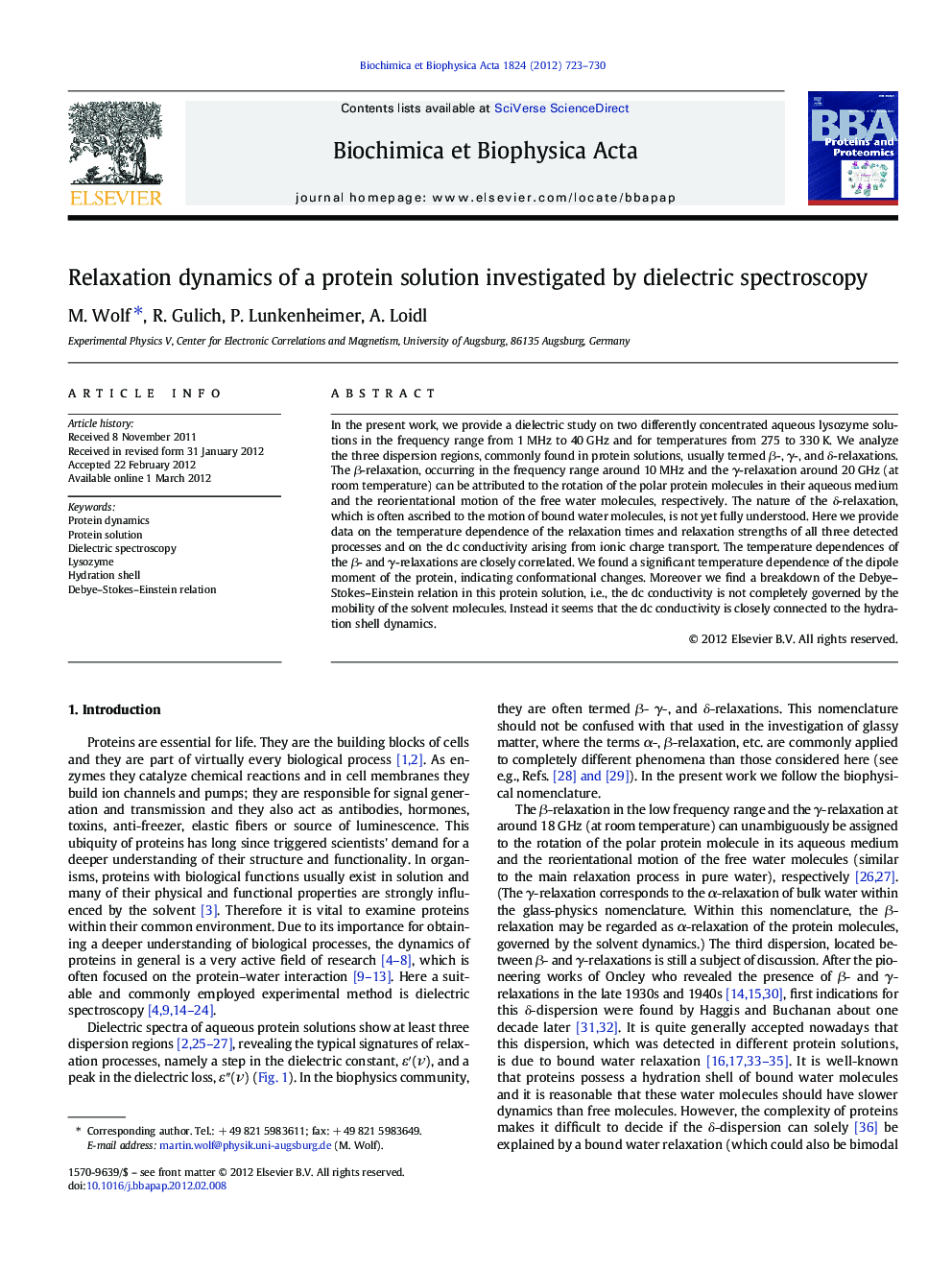| Article ID | Journal | Published Year | Pages | File Type |
|---|---|---|---|---|
| 1177778 | Biochimica et Biophysica Acta (BBA) - Proteins and Proteomics | 2012 | 8 Pages |
In the present work, we provide a dielectric study on two differently concentrated aqueous lysozyme solutions in the frequency range from 1 MHz to 40 GHz and for temperatures from 275 to 330 K. We analyze the three dispersion regions, commonly found in protein solutions, usually termed β-, γ-, and δ-relaxations. The β-relaxation, occurring in the frequency range around 10 MHz and the γ-relaxation around 20 GHz (at room temperature) can be attributed to the rotation of the polar protein molecules in their aqueous medium and the reorientational motion of the free water molecules, respectively. The nature of the δ-relaxation, which is often ascribed to the motion of bound water molecules, is not yet fully understood. Here we provide data on the temperature dependence of the relaxation times and relaxation strengths of all three detected processes and on the dc conductivity arising from ionic charge transport. The temperature dependences of the β- and γ-relaxations are closely correlated. We found a significant temperature dependence of the dipole moment of the protein, indicating conformational changes. Moreover we find a breakdown of the Debye–Stokes–Einstein relation in this protein solution, i.e., the dc conductivity is not completely governed by the mobility of the solvent molecules. Instead it seems that the dc conductivity is closely connected to the hydration shell dynamics.
Graphical abstractFigure optionsDownload full-size imageDownload high-quality image (375 K)Download as PowerPoint slideHighlights► Temperature and concentration dependent dielectric spectra of a protein solution. ► Broad frequency range enabling detection of several dynamic processes. ► Calculation of effective dipole moment and hydrodynamic radius. ► Breakdown of the Debye-Stokes-Einstein relation. ► Temperature dependence of spectra covering all intrinsic relaxations.
